
Directed by Spike Lee, Da 5 Bloods, streaming on Netflix, tells the story of four African-American vets who return to Vietnam, searching for the remains of their fallen squad leader played by Chadwick Boseman and the promise of buried treasure. The cast of Delroy Lindo (Paul), Clarke Peters (Otis), Norm Lewis (Eddie), and Isiah Whitlock Jr. (Melvin) are later joined by Paul’s concerned son Jonathan Majors. Together, they battle their own demons, rivals and nature, while being confronted by the lasting devastation of the Vietnam War.
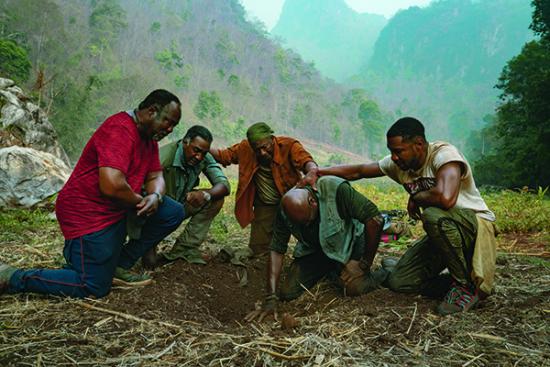
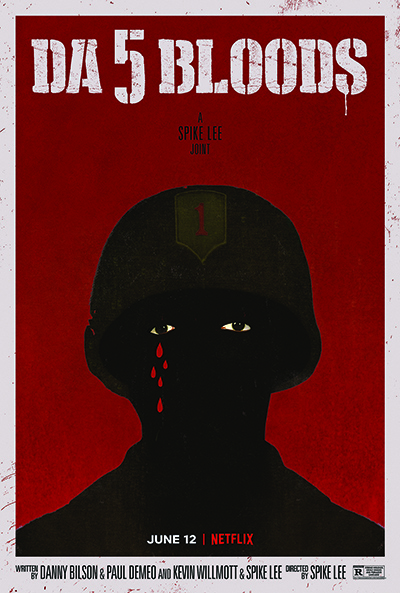
When did you begin shooting and where were your locations?
José Antonio Garcia: It was a year ago. We were based mostly out of Chiang Mai, in northern Thailand. We spent a couple of days in Bangkok and a week in Ho Chi Minh City (formerly Saigon) in Vietnam,
Now how long was the shoot?
José Antonio Garcia: It was three months and it was very intense. The locations were very difficult and the logistics to get all the gear up there. Sometimes it took half a day. The locations weren’t close. Call times would be very early, we’d have breakfast and then climb up the hill, and then shoot until sundown. It was a good twelve hours and by the time you got back to the hotel, it could be fourteen.
The dialog recording is very good, what did you use?
José Antonio Garcia: Most of the sound is wires because we were shooting with two cameras constantly, pretty wide most of the time. In some instances, we were able to plant mics, but the majority was the wires, because of the logistics of light, the sun, two cameras, and lots of ‘oners.’
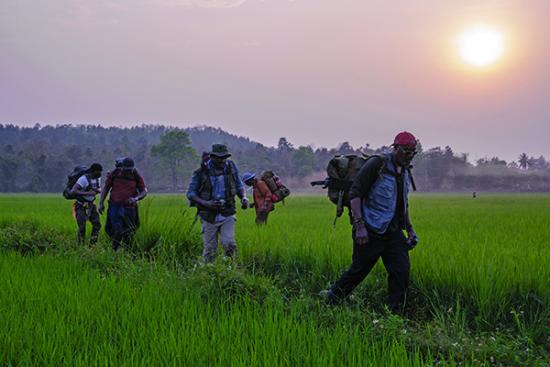
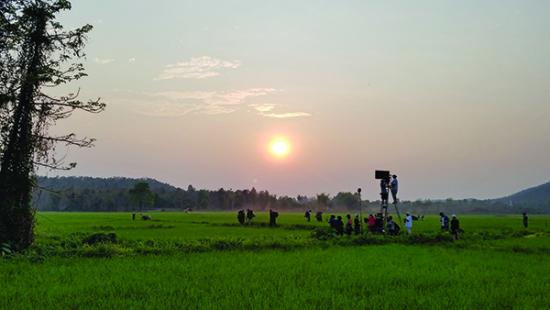
Was it difficult to wire because the costumes had to be sweaty or wet?
José Antonio Garcia: That was a major battle because they were constantly keeping the costumes wet, spraying them with water mixed with glycerin to look like sweat. I was constantly washing the Sanken lavs because eventually the element gets wet. The humidity and the heat prevented anything from sticking. For most of the actors, I had them wearing the URSA lav chest straps. My wires are Lectrosonics and I was recording on the Sound Devices 688 with the CL-12 mixer. Sometimes I needed two 688’s because of the amount of people involved, eleven in some scenes.
Your longtime Boom Operator is Jonathan Fuh, and he prefers the Sennheiser 50.
José Antonio Garcia: I love the ‘50,’ my favorite sound. Other brands of microphones wouldn’t have lasted two minutes in the humidity and heat.
Were you mostly with a bag rig or did you have a cart?
José Antonio Garcia: I had both. We sometimes went with the bag, but that was limited to six receivers. If I needed more, I’d take the Venue off the cart and just go with a battery.
There is a lengthy boat scene where they go upriver, sort of an homage to Apocalypse Now. There couldn’t have been much room for you and Jonathan between the cast and the camera.
José Antonio Garcia: There was no room. Jonathan got in there, he never stands down, but you know, he is a filmmaker, so yeah. Most of the time, it was a fight to get space on the boat. I was on the roof. We started with myself and Video Assist, but then we were going under some bridges that were kind of iffy, so I wanted to minimize the danger. I ended up running the video system, and the audio from the top. Always ready to jump in, in case the bridge was too close for comfort.
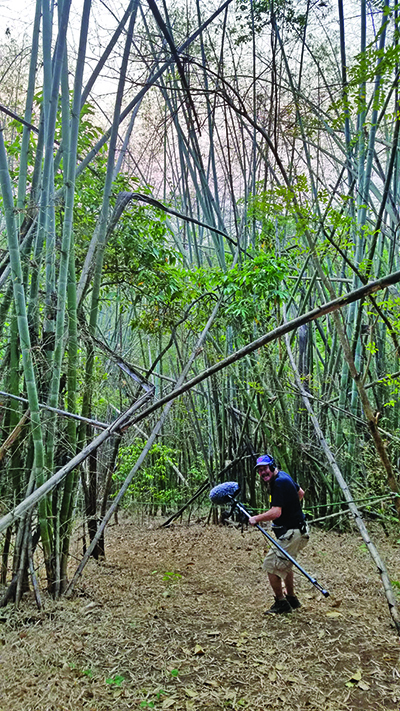
That’s very challenging. The entire movie is on location. Did you have any built sets?
José Antonio Garcia: Very few. There were a couple of them, an old house they redid very nicely, another was the radio studio set of Hanoi Hannah, a little set built at the same location of the Apocalypse Now Disco in Ho Chi Minh City.
How was it working with Spike Lee?
José Antonio Garcia: I love the man, he is so energetic, so contagious with his energy. I think it defines him very well that the first day of shooting we did the Black Lives Matter scene. A lot of people think it was an afterthought, but that was day one of the shoot. He flew all these people from the States to Chiang Mai. It was amazing, that’s the spirit of Spike, he’s very convinced about his beliefs. He really pushed us with his vision and it’s very, very contagious. This project reminds me of my origins; documentaries. The way Spike shoots is very similar to a documentary. There was barely any time to prep and, just get there and shoot, move on. Sort of like carrying a piano up and down the mountain. It was intense, but I love working with him.
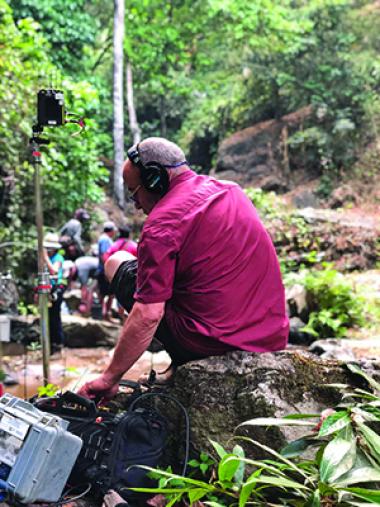
What were some of the other challenges that you faced?
José Antonio Garcia: I would say mostly the many different locations. The crew was really cohesive and we worked very well together. The actors were always cooperative. Delroy Lindo can be very intense, but when it was time to switch out a lav, he was very cooperative. The biggest challenge was the logistics. We had very limited time, and we were moving very, very fast. Obviously, the humidity, and the wardrobe department with its need to keep the costumes wet with “sweat.”
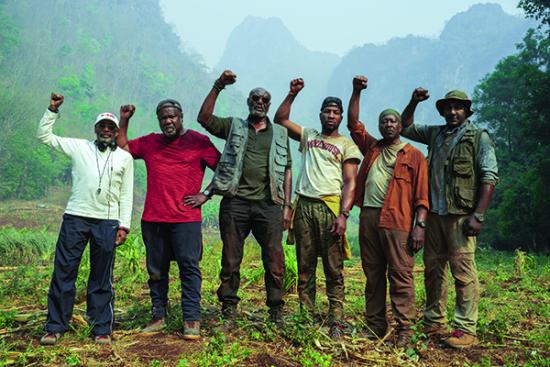
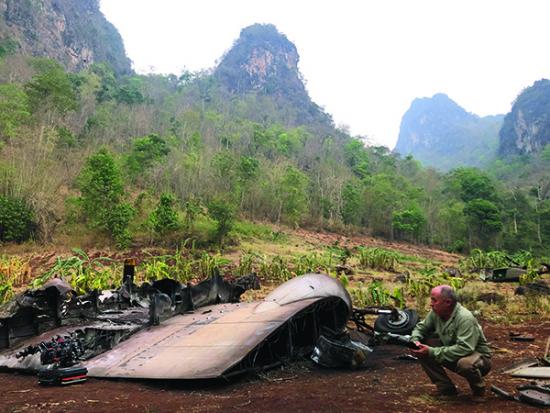
In the scenes where Delroy was walking through the jungle, all handheld. How did you manage that?
José Antonio Garcia: The terrain was very uneven. Jonathan had to boom between the branches and stay above the camera to be safe. There were moments he could come in, but mostly, I would say I stayed with the wire. Most of the show, I wish we had had more opportunity to use the boom because it sounds richer, fuller. We had two locals helping, one called “Pop,” Charat Phonwon, who was very good and experienced and Ford Samart, who had never been on set, he was a trainee, but he had a trerrific disposition. He would help us get things from the truck. Pop was pretty good at wiring. We would have a whole row of cast, and Pop and I would wire one after the other. Because I had a washing machine, I was doing the laundry for the chest straps every night.
Did you bag the transmitters because of the sweat?
José Antonio Garcia: Most of the time, the transmitter was in their pants pockets. We placed the mic element of the Sankens upside down so they wouldn’t get wet, but eventually the glycerin would find its way in. I would wash them in water and hang them and hope that they will work fine again the next day.
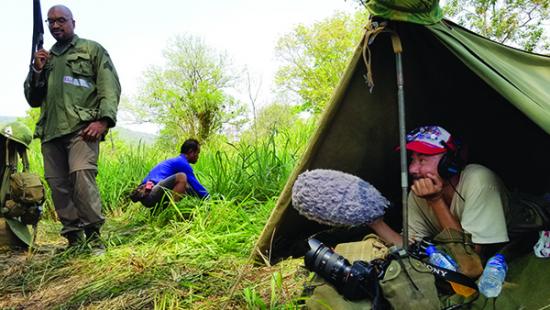
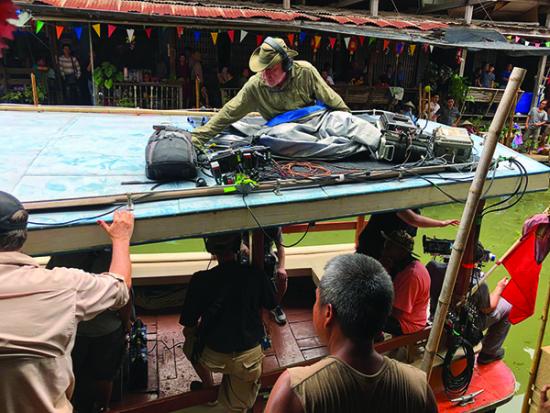
Does Spike like to have the actors improvise?
José Antonio Garcia: In a scene between Jonathan Majors and Delroy, there were lots of cicadas, Spike had them improvise “What is that sound?” Delroy, “cicadas.” Jonathan answers, “Cicadas don’t sound like that in Brooklyn.” That was the reason for that. Their levels to the cicada ratio was good so that helped.
What was it like shooting in Vietnam?
José Antonio Garcia: I loved it, Saigon is amazing. The French influence, the styles, architecture, a fantastic city. Fantastic. Very alive, very, very different. I really enjoyed my time there, but I wish I could have been able to stay longer to see the rest of the country, but I had to come back to do a Clint Eastwood project.
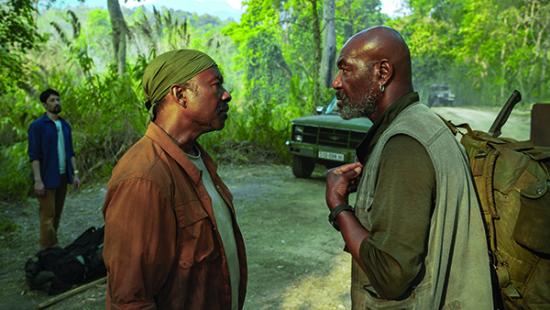
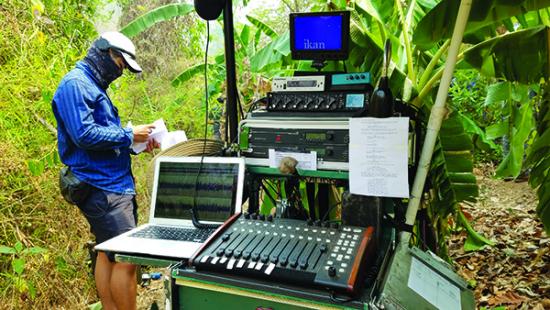
The movie is full of references to other films.
José Antonio Garcia: Yes, Spike does that with Apocalypse Now and the walk-through the rice paddies and The Treasure of Sierra Madre, with the line, “We don’t need no stinkin’ badges.” The homage to Marvin Gaye, I think is beautiful, where they’re singing while walking. That was very difficult to achieve, and I’m very proud of that one. It was the entire song, so it was a very long walk. We remoted the antennas for the wires and my team was walking them back. Without walking the antennas, I wouldn’t have had any reception. I got a lot of exercise. I lost serious poundage.
The script is fantastically written and delivered. The long scene with Delroy walking through the jungle talking to the camera was amazing. I couldn’t see him, but when we filmed that scene, I got chills. It was really intense. Sometimes with the performances, I turn off the image because it’s all in the voice. The image can stupefy you, it’s beautiful, beautifully composed, you can get distracted. For me, the performance is in the voice, and when it clicks, it’s very musical.